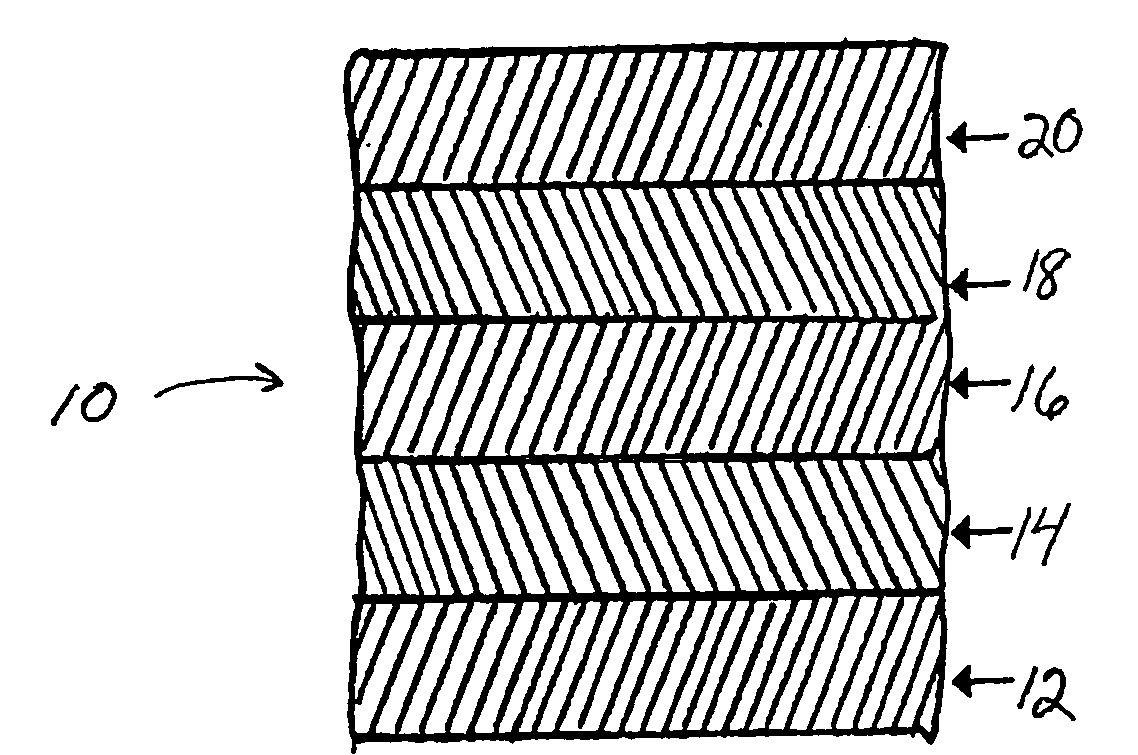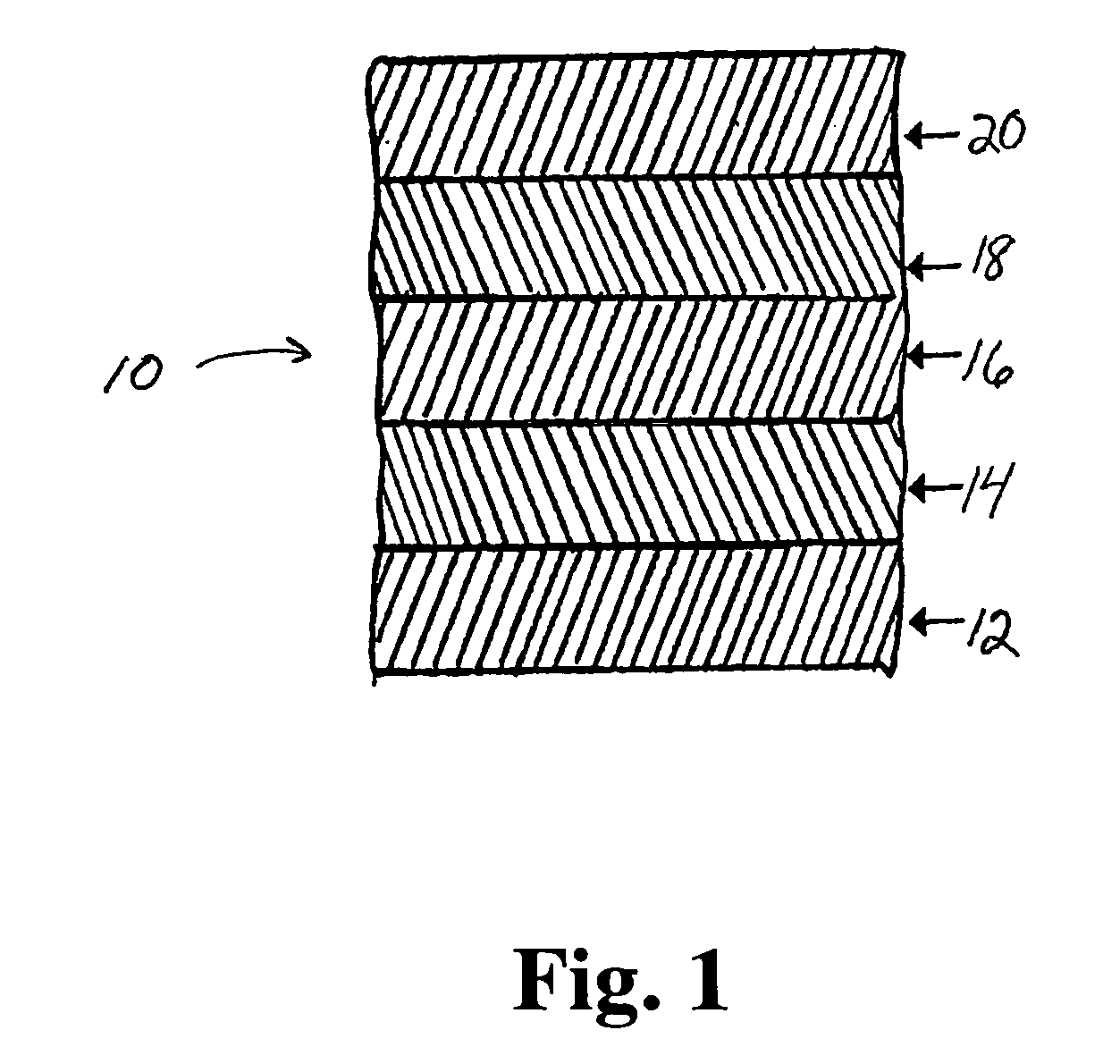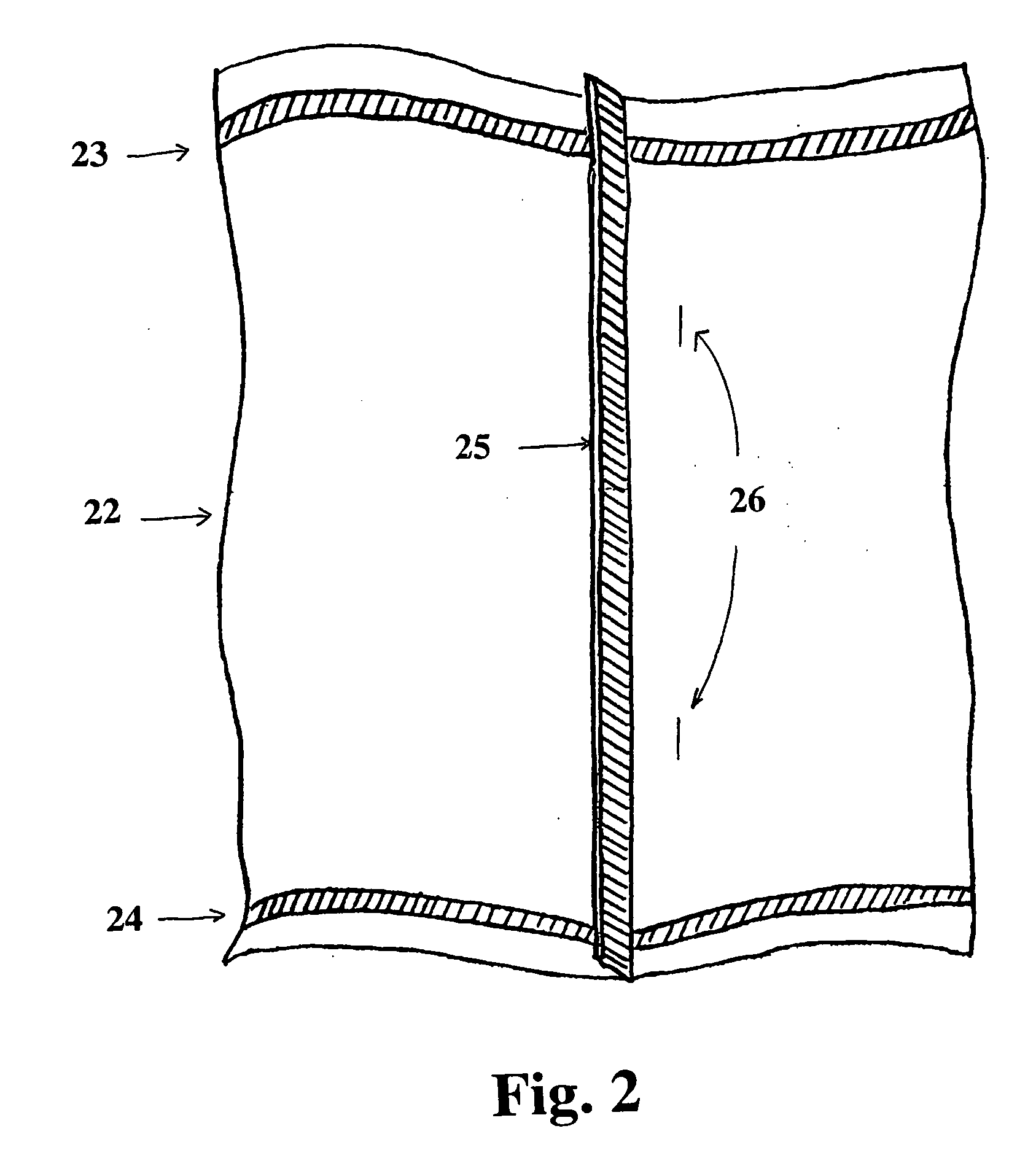Freezable/microwavable packaging films and venting packages
a technology of packaging films and venting packages, applied in the field of multi-layer films and packages, can solve the problems of increasing production costs, sealing failure, layer delamination and leakage of package contents during microwaving, etc., and achieves the effects of improving the distribution of moisture loss, improving the resistance to fracturing, and improving the resistance to melting or bursting
- Summary
- Abstract
- Description
- Claims
- Application Information
AI Technical Summary
Benefits of technology
Problems solved by technology
Method used
Image
Examples
example 1
Freezable, Microwaveable Film and Package Without Venting System
[0082]A microwaveable three-layer film was made using a conventional blown film coextrusion process. The structure of the three-layer film is given in Table 1 below.
TABLE 1Material of Layer (WeightLayer% of Layer)Resin GradeDensityMelt FlowHeat SealCopolymerTotal ™ EOD02-150.895 g / cc 12 g / 10 min.polypropylene (30%)(230° C.)CopolymerDow 6D20 0.9 g / cc1.9 g / 10 min.polypropylene (70%)(230° C.)CoreHomopolymerDow H110-02N 0.9 g / cc2.0 g / 10 min.polypropylene (100%)(230° C.)OuterPolyethylene (15%)Voridian0.921 g / cc0.7 g / 10 min.SkinE6838-969F(190° C.)LLDPE (85%)Dow 2045 0.92 g / cc1.0 g / 10 min.(190° C.)
[0083]A polyester-polyurethane adhesive available from Sovereign Specialty Chemicals under the trade name Primabond® was applied to the outer skin layer to bond a PET film layer to the three-layer coextruded film described in Table 1. The PET film is available from Celplast Metallized Product Limited, Toronto, Ontario, Canada, under...
example 2
Comparative
[0086]Commercially available microwaveable bags were received as shipped. It was found that several bags in the shipment showed visible fractures, demonstrating an inability to withstand subzero temperatures and weak strength of the film. One of the bags was analyzed to determine its construction. The bag had a thickness of 3 mils.
[0087]The analysis showed that the bag was a three-layer laminated bag having the structure shown in Table 2.
TABLE 2Layer MaterialLayer %PET23Adhesive + ink3Polypropylene74homopolymer + TiO2
[0088]A bag having this laminated three-layer PET / adhesive / PP homopolymer structure was placed in the same GE microwave at the same cooking power of 1000 watts as the Example 1 bag and was cooked for about 4 minutes. The microwaved bag exhibited seal failure, demonstrating poor heat seal strength and poor seal quality when exposed to microwave temperatures. In contrast, the Example 1 bag, made in accordance with the present technology, demonstrated both excel...
example 3
Freezable, Microwaveable Film
[0089]A freezable microwavable film of the present technology was made using a conventional blown film coextrusion process. The structure of the film is given in Table 3.
TABLE 3Material of LayerLayer(Weight % of Layer)Resin GradeDensityMelt FlowHeat sealCopolymer polypropyleneTotal ™0.895 g / cc 12 g / 10 min.30%EOD02-15(230° C.)Copolymer polypropyleneDow 6D200.9 g / cc1.9 g / 10 min.70%(230° C.)CoreHomopolymerDow H110-02N0.9 g / cc2.0 g / 10 min.polypropylene 100%(230° C.)OuterCopolymer polypropyleneTotal ™0.895 g / cc 12 g / 10 min.Skin30%EOD02-15(230° C.)Copolymer polypropyleneDow 6D200.9 g / cc1.9 g / 10 min.70%(230° C.)
[0090]A polyurethane adhesive, such as, for example, a polyester-polyurethane adhesive available from Rohm and Hass Company under the trade name Mor-Free® Solventless Laminating Adhesive, or from Liofol Company, Cary, N.C., under the trade name Tycel® adhesive, can preferably be applied to the outer skin layer to bond a PET film layer to the three-laye...
PUM
| Property | Measurement | Unit |
|---|---|---|
| Temperature | aaaaa | aaaaa |
| Temperature | aaaaa | aaaaa |
| Temperature | aaaaa | aaaaa |
Abstract
Description
Claims
Application Information
 Login to View More
Login to View More - R&D
- Intellectual Property
- Life Sciences
- Materials
- Tech Scout
- Unparalleled Data Quality
- Higher Quality Content
- 60% Fewer Hallucinations
Browse by: Latest US Patents, China's latest patents, Technical Efficacy Thesaurus, Application Domain, Technology Topic, Popular Technical Reports.
© 2025 PatSnap. All rights reserved.Legal|Privacy policy|Modern Slavery Act Transparency Statement|Sitemap|About US| Contact US: help@patsnap.com



